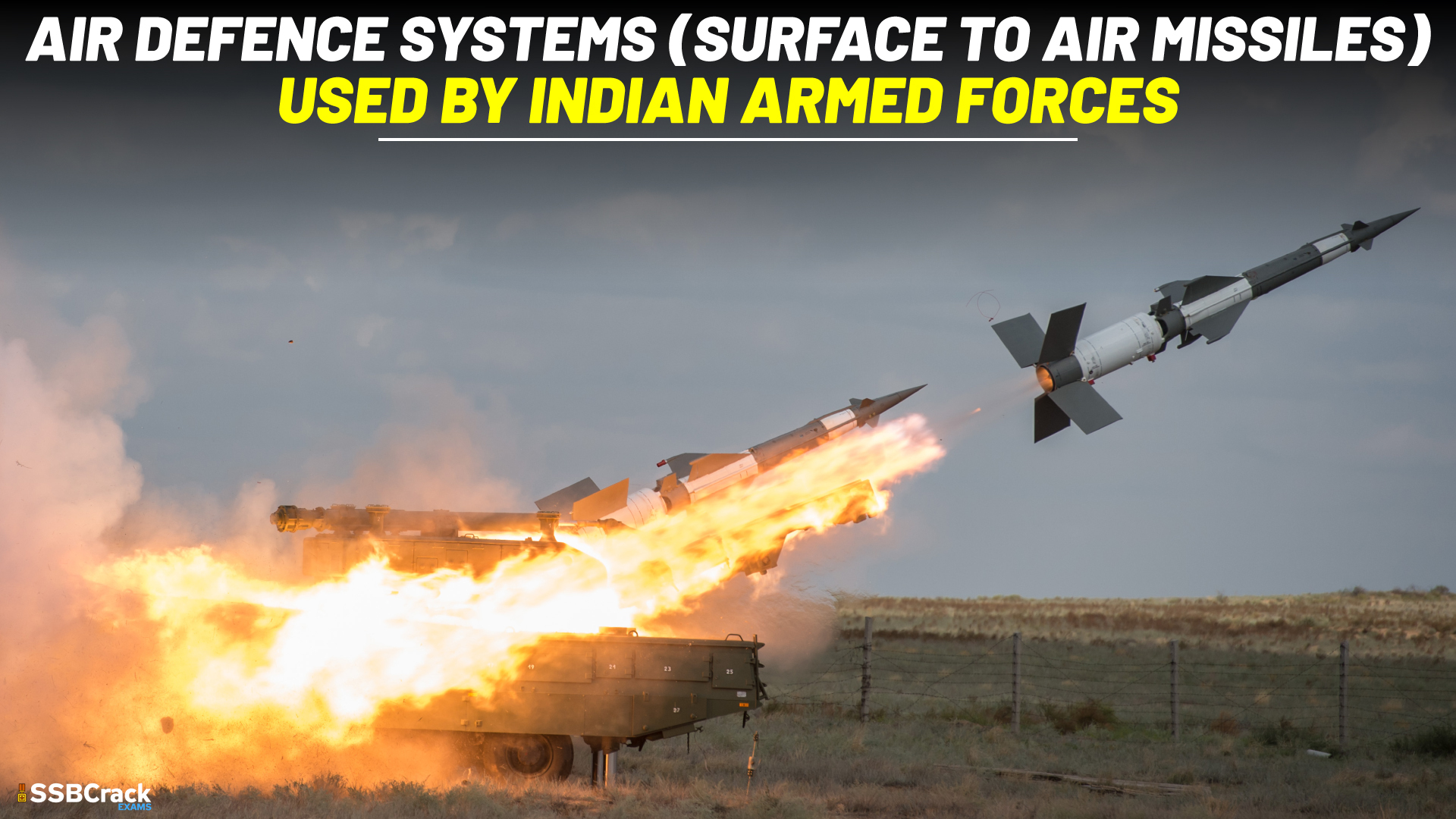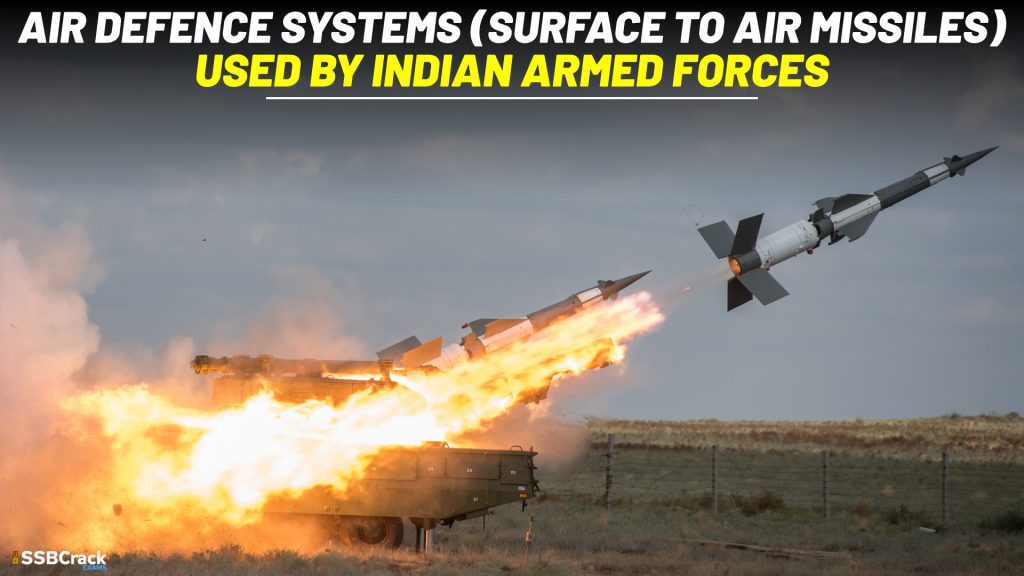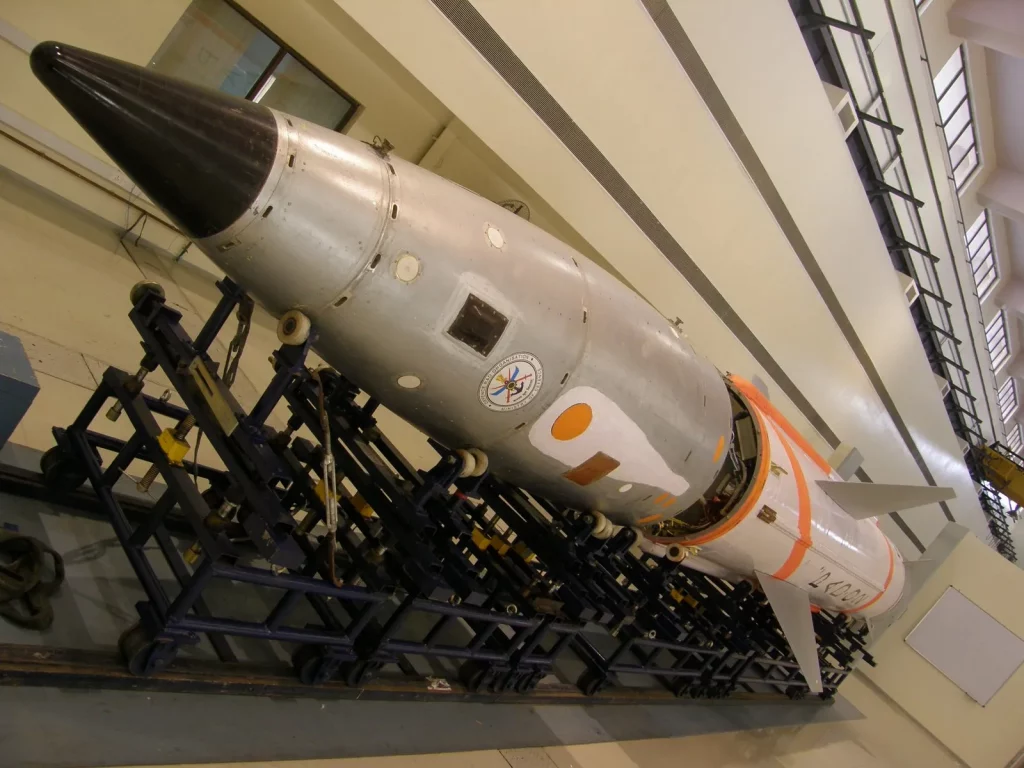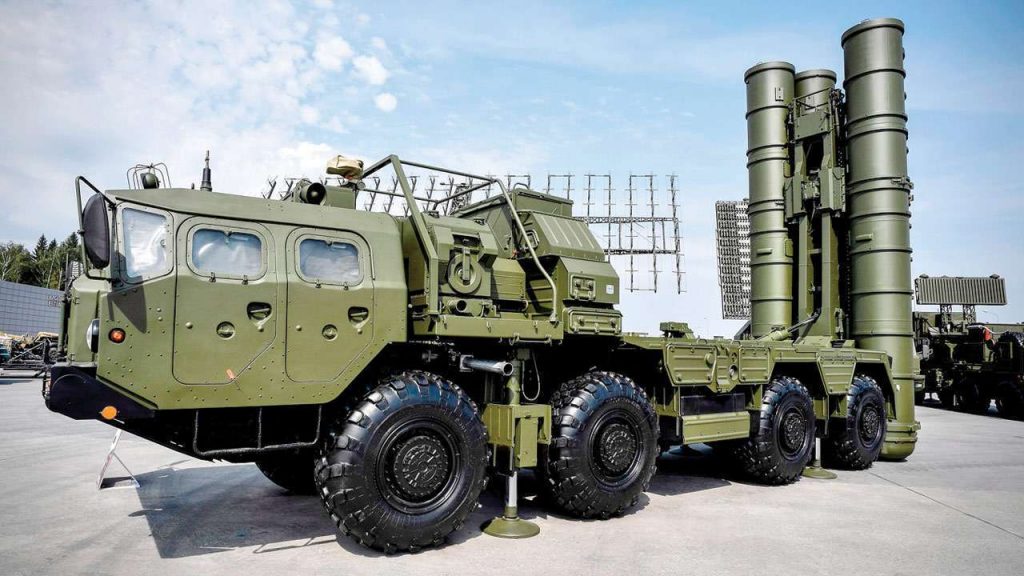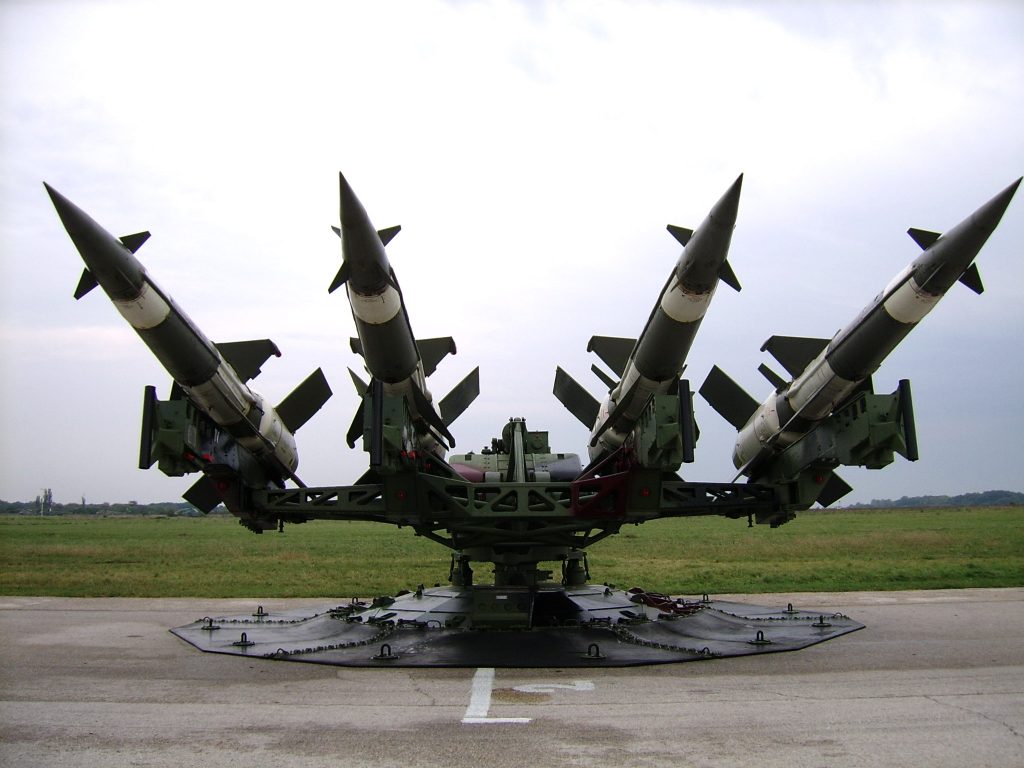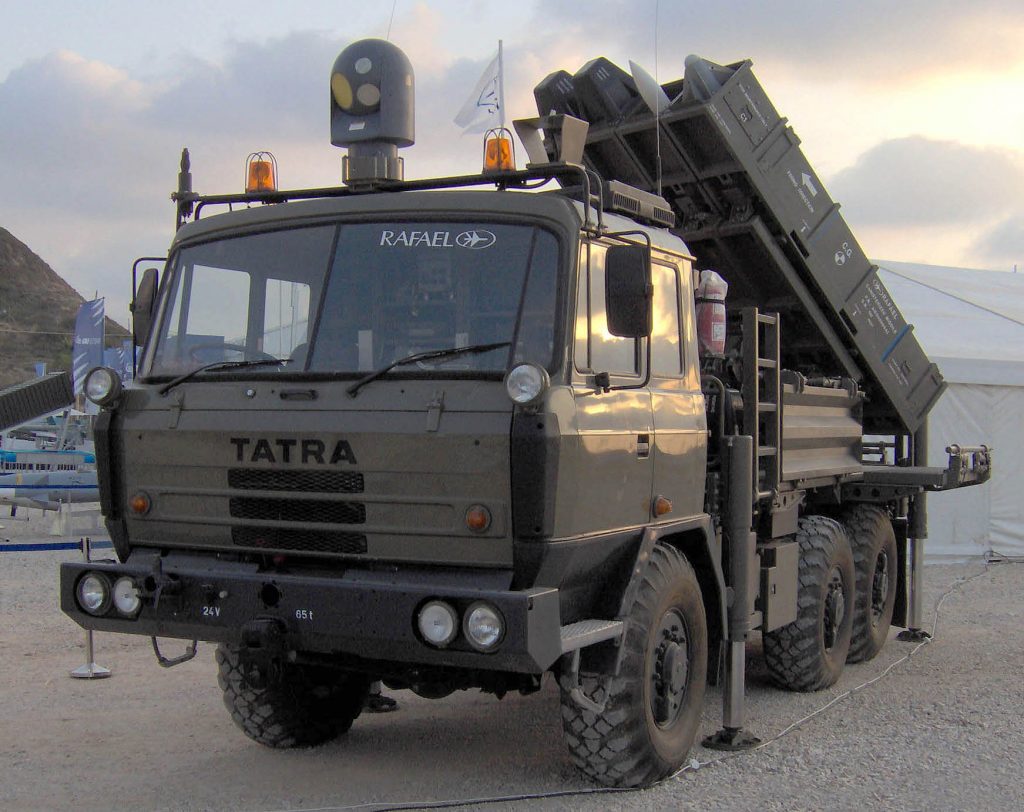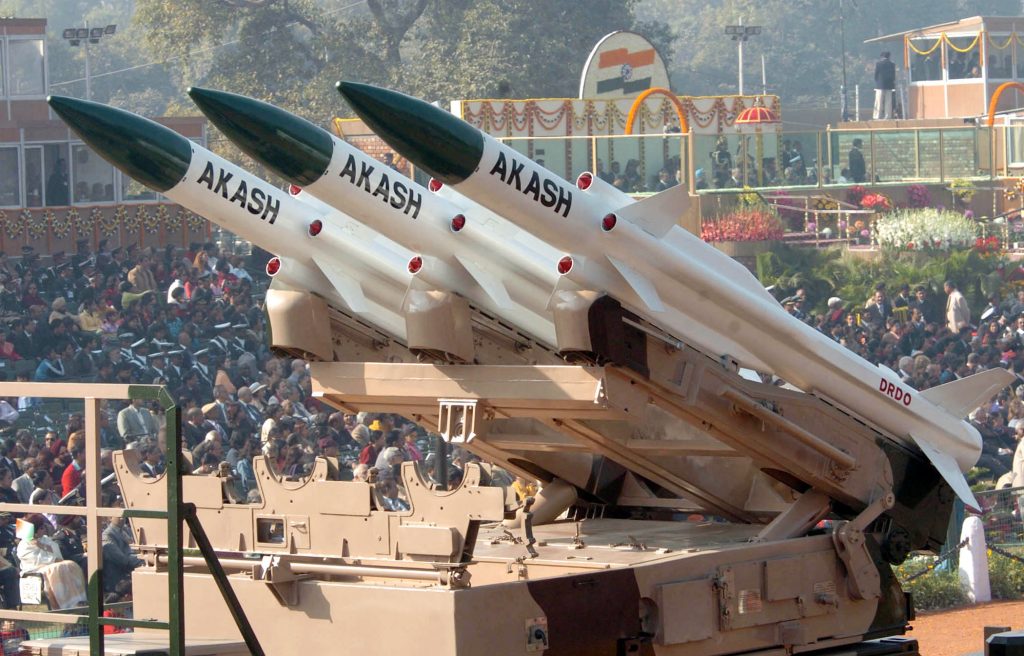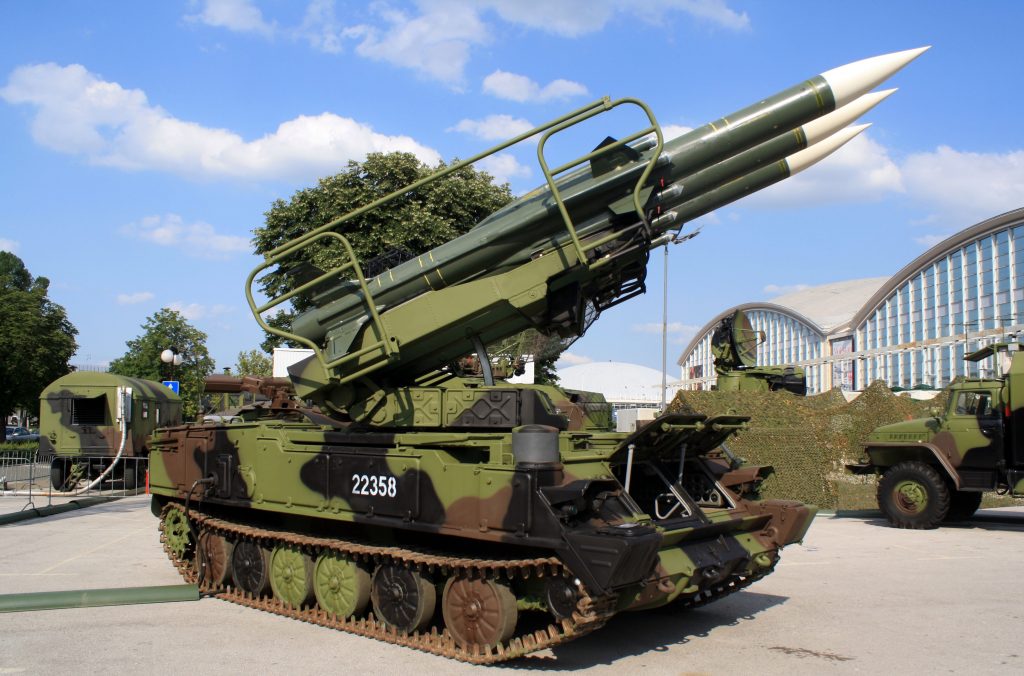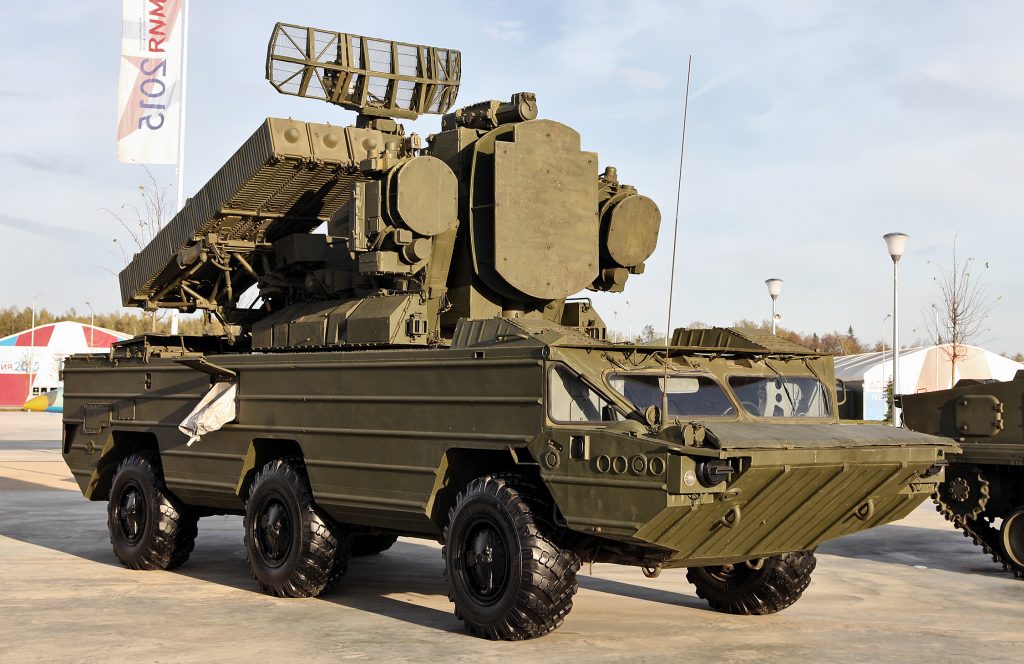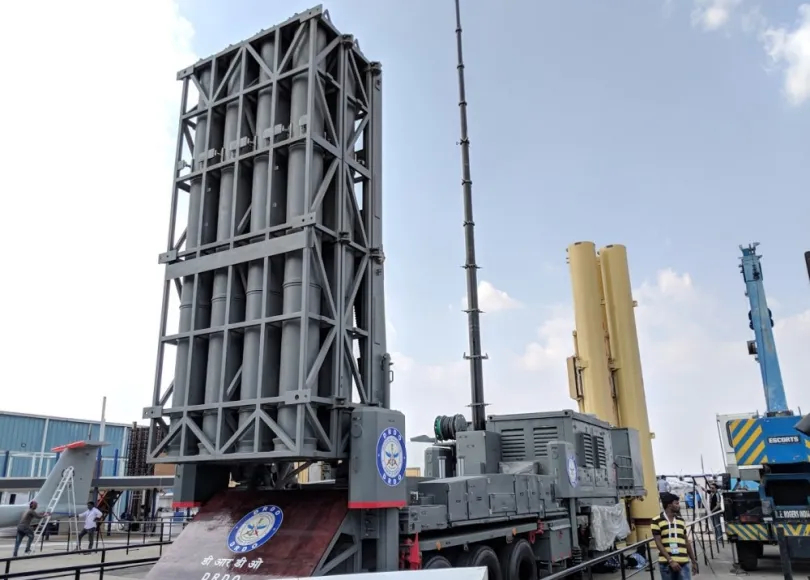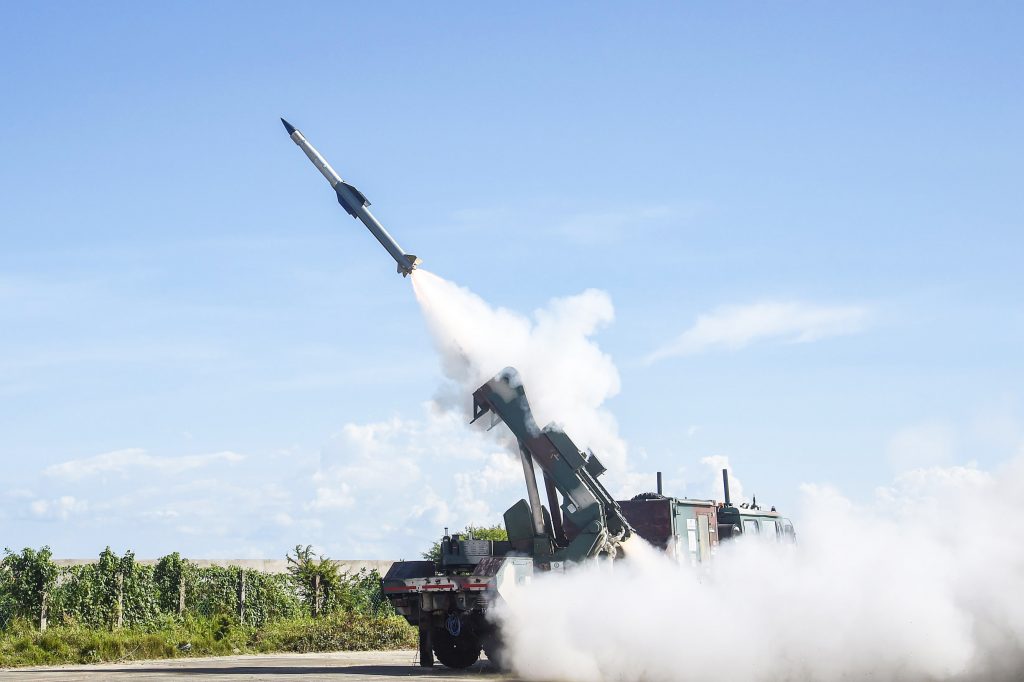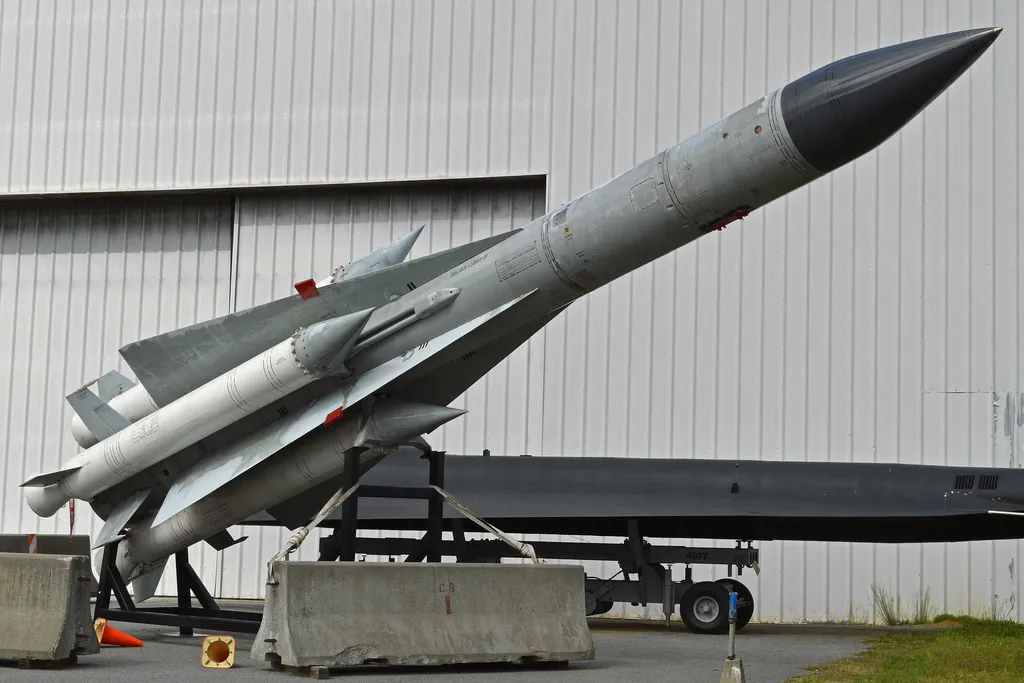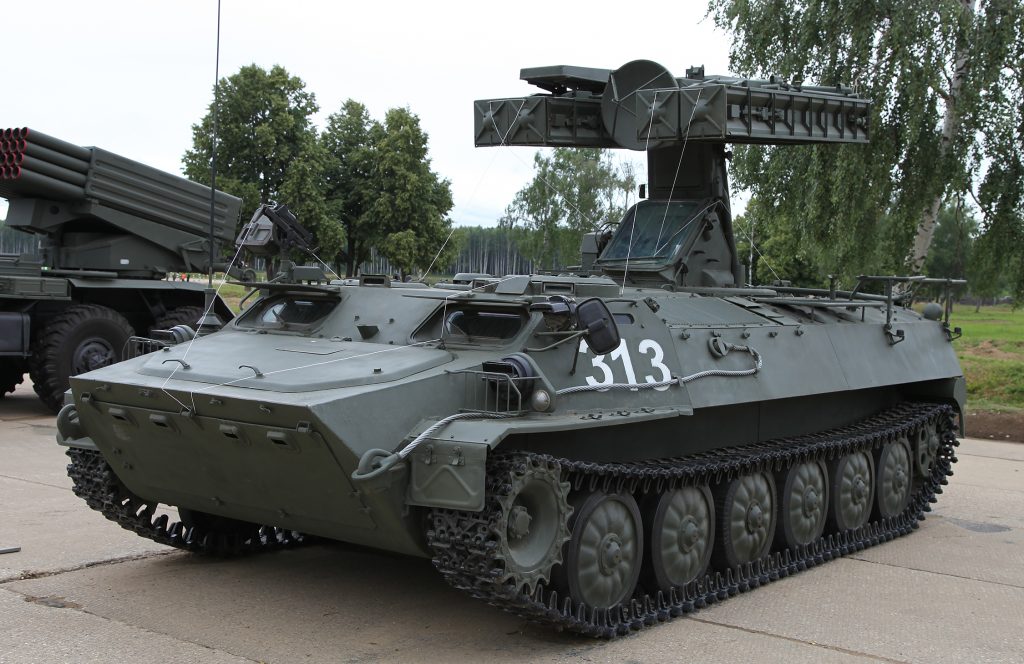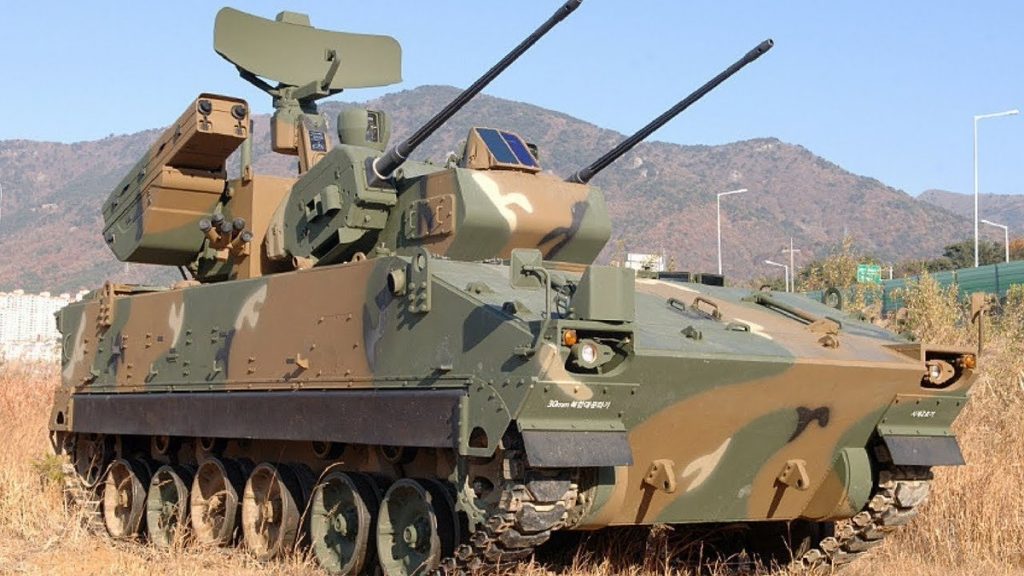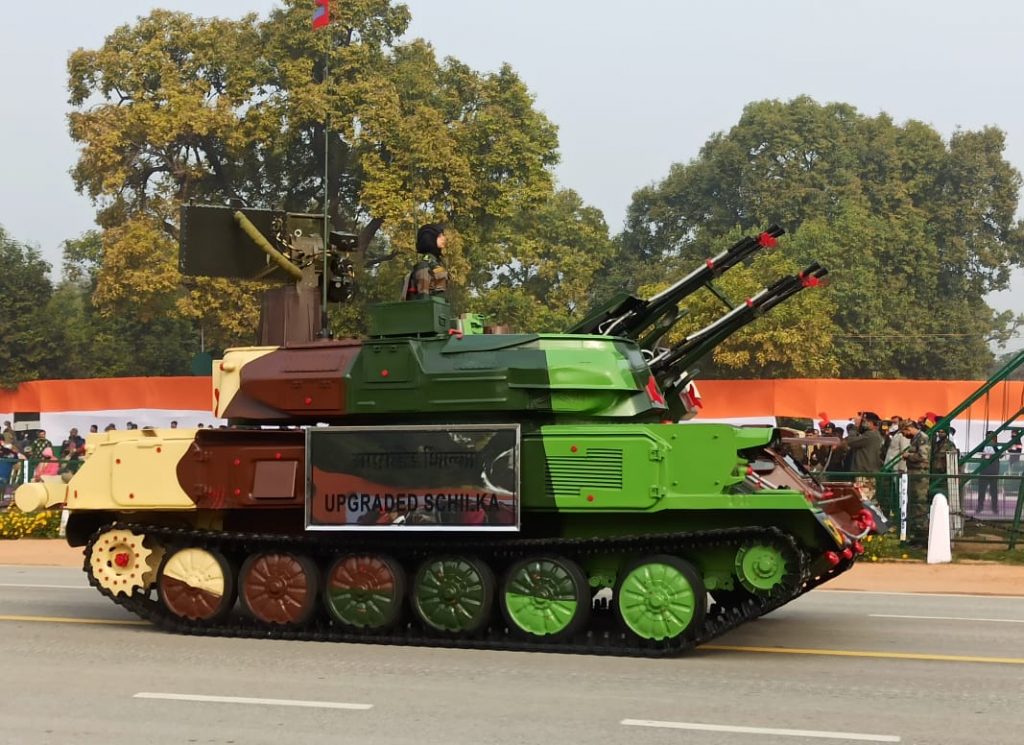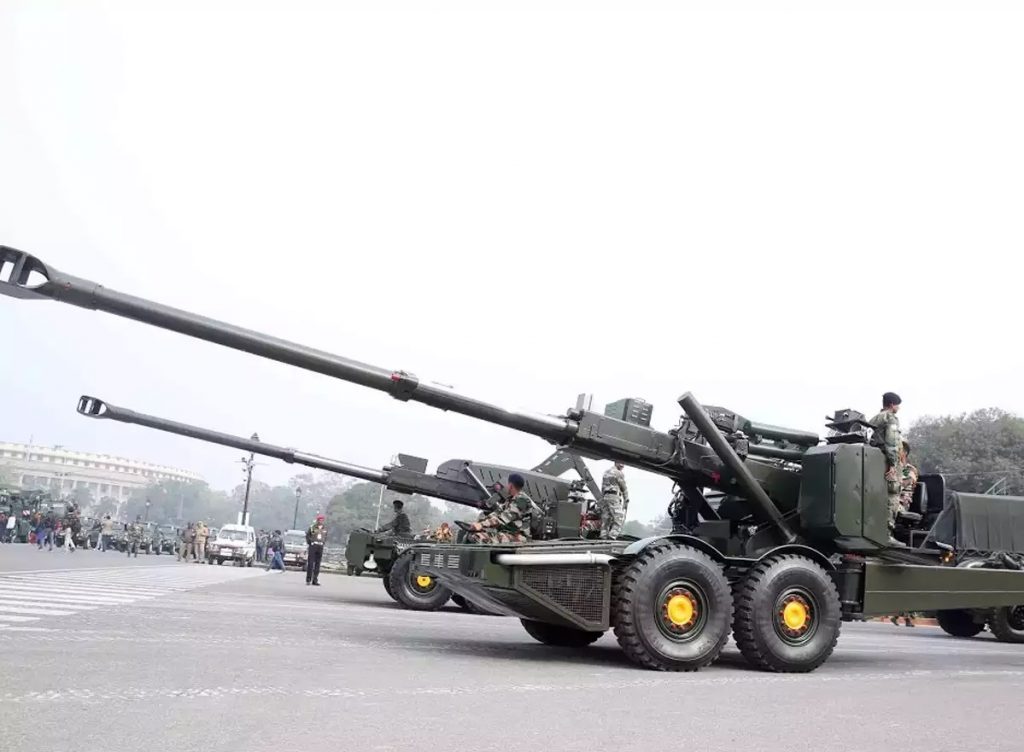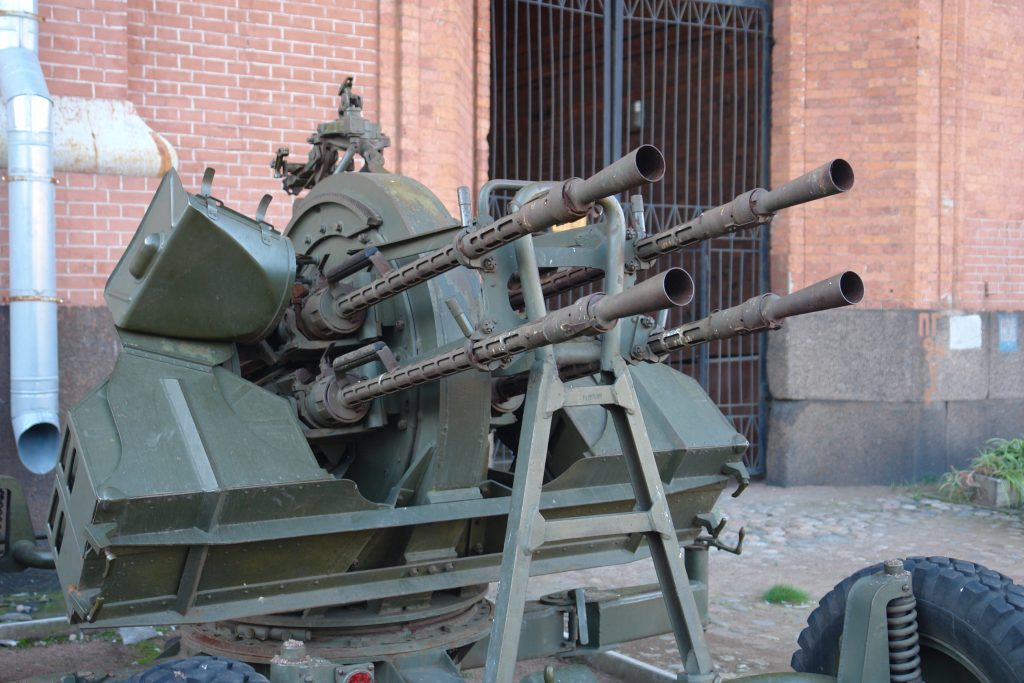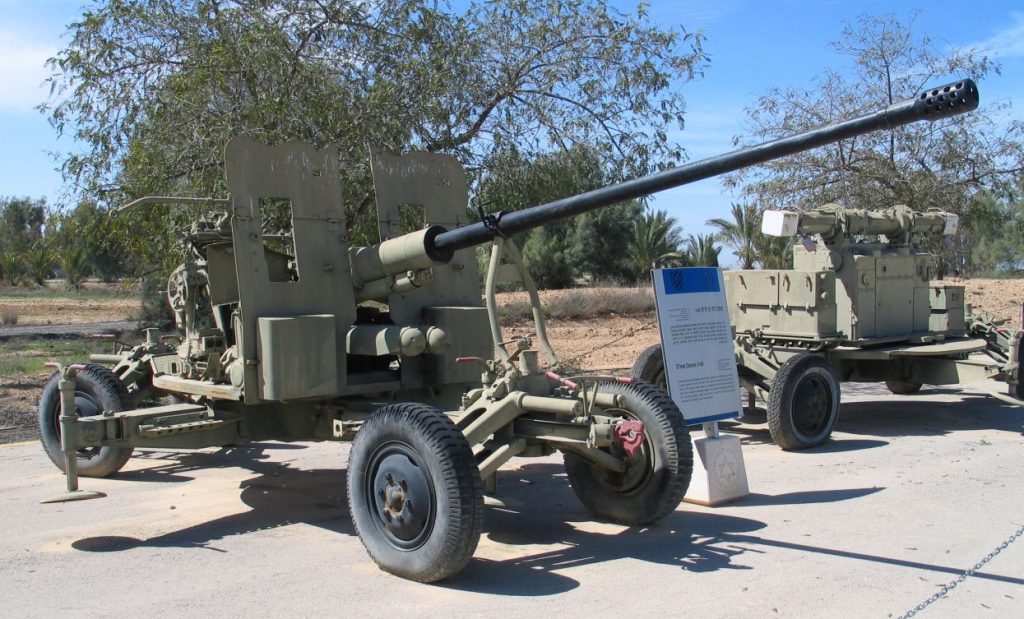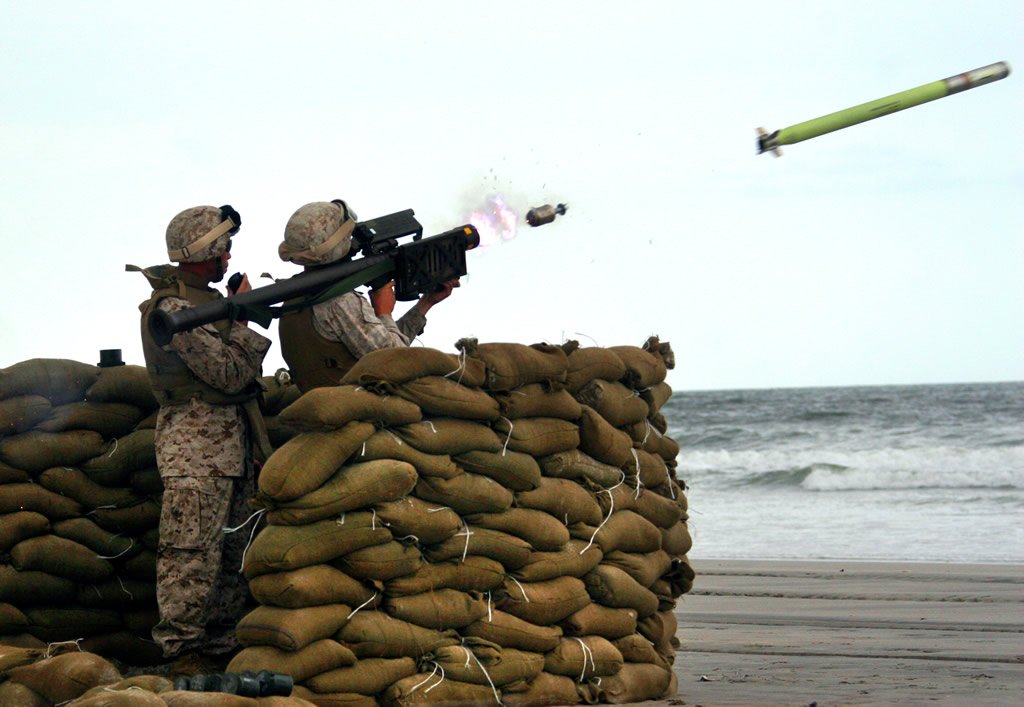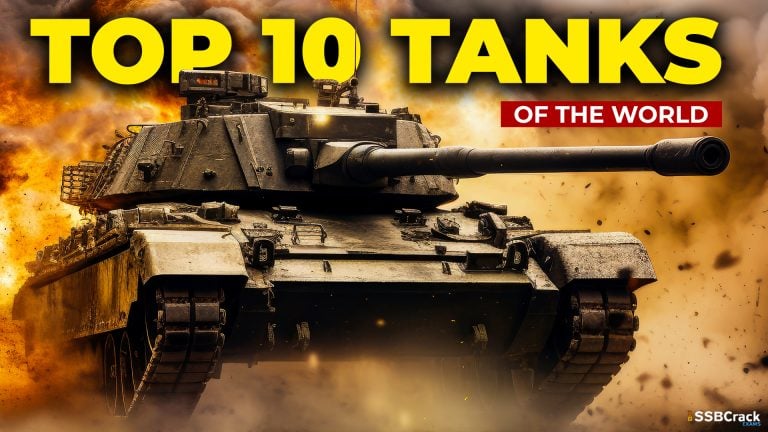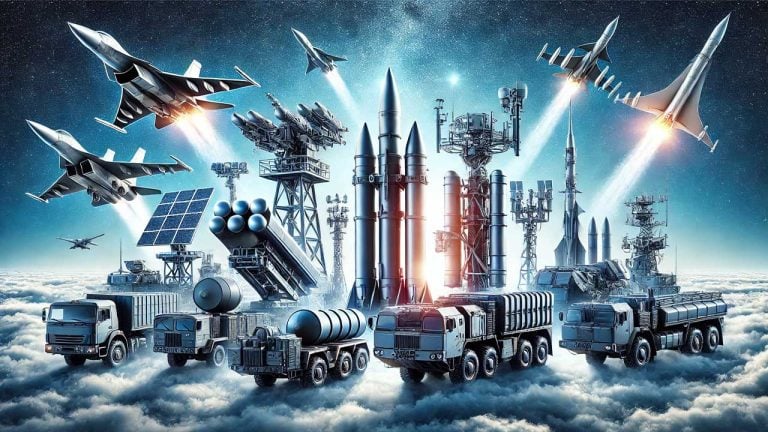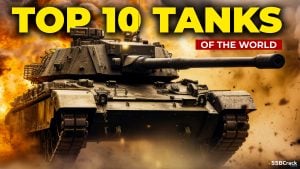A surface-to-air missile (SAM), often referred to as a ground-to-air missile (GTAM) or surface-to-air guided weapon (SAGW), is a missile that is made to be fired from the ground in order to take out aircraft or other missiles. It is a particular kind of anti-aircraft system; in today’s armed forces, missiles have mostly superseded other types of specifically designed anti-aircraft weapons, with anti-aircraft guns being relegated to specialised functions.
Systems for ground-based air defence are essential to a nation’s defence. These are the sky’s goalkeepers. The Indian air force is currently having trouble keeping each squadron intact. The function of air defence systems becomes crucial in such a situation. We’ll examine the various types of air defence systems used by India in this post.
In India, a multi-layer air defence system is currently being developed. A multi-layer air defence system would guarantee that incoming aerial threats were successfully intercepted. The four tiers of India’s multi-layer air defence system are listed below.
- Indian Ballistic Missile Defense Program’s long-range interceptor
- S-400 Triumph intermediate intercept
- Interception at close range: Akash Air Defense System and Comparable Systems
- Interception at very close range: MANPADS and anti-aircraft guns.
Ballistic Missile Defense Program in India
A multi-layered ballistic missile defence system is being developed and deployed as part of the Indian Ballistic Missile Defence Program to defend India from ballistic missile assaults. It is a two-tiered system made up of the Prithvi Air Defence (PAD) missile for high-altitude interception and the Advanced Air Defence (AAD) Missile for lower-altitude interception. It was introduced in response to the ballistic missile threat from Pakistan and China. Any incoming missile launched from 5,000 kilometres away should be able to be intercepted by the two-tiered shield. Along with command and control posts, the system also consists of an overlapped network of early warning and tracking radars.
Prithvi Air Defence
An anti-ballistic missile called the Prithvi Air Defence (PAD) was created to stop incoming ballistic missiles from entering the atmosphere (exo-atmospheric).
Its operational range is between 300 and 2000 kilometres. It may intercept at an altitude of up to 80 kilometres. It is intended to stop approaching ballistic missiles in the middle of their cruise trajectory. The PAD is quick enough to target intermediate-range ballistic missiles with a top speed of over Mach 5.
Also read: Top 10 Anti-Aircraft Missile Systems In The World
The missile has two stages. While the second stage uses liquid fuel, the first stage uses a solid fuel motor. It contains manoeuvre thrusters that, at 50 km (31 mi) altitude, can produce a lateral acceleration of more than 5 gs. An inertial navigation system that incorporates mid-course updates from LRTR and active radar homing in the terminal phase provides guidance. The PAD missile’s target acquisition and fire control radar is called LRTR. It is an active phased array radar that can track 200 targets at a 600 km range.
A modified Prithvi-II missile was successfully intercepted by a PAD missile during the first test, which took place in 2006 at a height of 50 kilometres (31 mi). The ballistic missile Prithvi-II has been successfully adapted to follow the M-11 missile’s trajectory.
Advanced Air Defence (AAD) Missile
An anti-ballistic missile called the Advanced Air Defence (AAD) is made to intercept incoming ballistic missiles in the endoatmosphere at a height of 30 km (19 mi). It is intended for targets that somehow pass through PAD. It is an additional layer that supports PAD.
The operational range of an AAD is 150–200 kilometres. It can go as fast as Mach 4.5. The AAD is a solid-fueled, single-stage missile with siliconized carbon jet vanes. Guidance is comparable to PAD guidance using a local radio frequency seeker. It allows active radar homing in the terminal phase, mid-course updates from ground-based radar, and the inertial navigation system (INS).
Systems for S-400 missiles
The S-400 Triumf Missile System is an anti-aircraft missile defence system created by Russia’s Almaz Central Design Bureau. Triumf is Russian for Triumph. Since 2007, both the Russian Armed Forces and other international operators have used it.
Also read: Why S-400 Missiles Systems Is A Game Changer For Indian Armed Forces?
Interception at close range (less than 100 km)
S-125 Pechora
S-125 Pechora is a Soviet-made surface-to-air missile system. This system has served as the Indian Air Force’s primary means of air defence for a very long period. As the Soviet Union originally put this system into use in 1961, it has been in use for 60 years. Almost every contemporary conflict has involved this framework. It has defeated numerous opponents with innumerable kills. 25 Pechora squadrons are run by the IAF.
SPYDER
The SPYDER (Surface-to-air PYthon and DERby) is a short- and medium-range mobile air defence system created by Israel Aerospace Industries and Rafael Advanced Defense Systems (IAI). The SPYDER is a low-level, quick-response surface-to-air missile system that can take down drones, manned and unmanned aircraft, and precision-guided weapons. In conflict zones, it offers mobile forces point and area defence as well as air defence for stationary assets.
Also read: All About IAF SPYDER Surface-To-Air Missile
The Python-5 and Derby surface-to-air missiles, which have full compatibility with air-to-air missiles, are designed to be fired from the SPYDER launcher. The SPYDER comes in two different versions: the SPYDER-SR (short range) and the SPYDER-MR (medium range). Both systems are self-propelled, network-centric, all-weather, quick to react, and rapid to launch.
One central command and control unit, six missile firing units, plus a resupply vehicle make up a standard battery. While the SPYDER-MR features the EL/M-2084 MMR radar, the SPYDER-SR employs the EL/M-2106 ATAR radar. The latter is the same radar that is currently in use by the Israel Defense Forces’ Iron Dome system.
Akash Air Defence System
The Defence Research and Development Organization (DRDO) and Bharat Dynamics Limited created the medium-range mobile surface-to-air missile defence system known as Akash, and Bharat Dynamics Limited manufactures the missiles.
The missile system can hit targets up to 18,000 metres above the ground and 45 kilometres away. It has the ability to destroy ballistic missiles as well as aerial targets such as fighter jets, cruise missiles, and air-to-surface missiles.
A single Rajendra 3D passive electronically scanned array radar, four interconnected launchers, and three missiles each make up an Akash battery. Each battery has the ability to attack up to 12 of the 64 targets it can track.
2K12 Kub
The Soviet Union’s low to medium-level “Kub” mobile surface-to-air missile system was created to defend ground forces from aerial assault.
Each 2K12 battery is made up of several comparable tracked vehicles, one of which is equipped with a 1S91 25 kW G/H band radar (with a range of 75 km) as well as an optical sight and a continuous wave illuminator. The battery typically consists of four triple-missile transporter erector launchers (TELs), as well as four trucks, each of which is equipped with a crane and three extra missiles. All three were created and constructed by MMZ; the TEL is based on a GM-578 chassis, while the 1S91 radar vehicle is based on a GM-568 chassis.
9K33 Osa AK
Developed in the Soviet Union, the 9K33 Osa is a highly mobile, low-altitude, short-range tactical surface-to-air missile system.
The Osa mobile air defence missile system was the first to have its own engagement radars integrated into a single vehicle. The 9A33 transporter-launcher and radar vehicles, which are integrated into all 9K33 models, have the ability to identify, track, and engage aircraft either independently or with the help of regimental surveillance radars. The six-wheeled BAZ-5937 cargo trucks may be flown and are completely amphibious.
Barak 8 “LRSAM”
An Indo-Israeli surface-to-air missile (SAM) known as Barak 8—also known as LR-SAM or MR-SAM—is built to protect against any kind of aerial threat, including planes, helicopters, anti-ship missiles, unmanned aerial vehicles (UAVs), ballistic missiles, cruise missiles, and combat jets.
Israel Aerospace Industries (IAI), India’s Defence Research & Development Organization (DRDO), Israel’s Administration for the Development of Weapons and Technological Infrastructure, Elta Systems, Rafael, and other businesses collaborated on the development of Barak 8. The missiles are made by BDL or Bharat Dynamics Limited.
Key Elements
- Long Distance
- connection for two-way data (GPS S-band)
- 360-degree active radar seeker coverage
- non-smoking propulsion
- Thrust vector management
- the use of two pulses
- Vertical Takeoff
- Several Concurrent Engagements
- An anti-ballistic missile with point defence
- Total of all three services Barak 8 is used by the Indian Army, Indian Air Force, and Indian Navy. This technology was recently installed in Ladakh as a countermeasure against China.
Quick Reaction Surface-to-Air Missile (QRSAM)
The DRDO collaborated with Bharat Electronics Limited and Bharat Dynamics Limited to develop the Quick Reaction Surface-to-Air Missile (QRSAM) for the Indian Army.
This missile is an all-terrain, all-weather SAM with electronic defences against aircraft radar jamming. The missile is kept in a canister and can be installed on a truck. QRSAM has a 25–30 km range and is propelled by solid fuel. Solid propellants are used in the single-stage missile’s propulsion system. The missile has a terminal active seeker created by the DRDO and a midcourse inertial navigation system with a two-way data link. The technology is able to look for and follow targets while they are moving. A small and portable weapon system is the QRSAM. It has a Command and Control System that is entirely automated. Aside from the launcher, the missile system consists of two four-walled radars, the Active Array Battery Multifunction Radar and the Active Array Battery Surveillance Radar, both of which have a 360-degree field of view.
S-200
The SA-5 Gammon, also known as the S-200 Angara/Vega in Russia, is a low- to high-altitude surface-to-air missile system with a very long range that is intended to defend broad areas against bomber attacks or other strategic aircraft. In the suburbs of Tallinn in Estonia, an S-200 trials unit that used the original 5V21 missile was first deployed between 1963 and 1964. By the end of 1966, there were 18 sites and 342 launchers active in the first operational regiments.
From the Soviet Union, India bought 24 5V21 missiles and two S-200 Angara systems in 1989. The S-200 now strengthens India’s low-altitude air defences as the nation works to develop more sophisticated ballistic missile defence capabilities, such as its Prithvi Air Defense (PAD) and Advanced Air Defense (AAD) missile interceptors.
Very Short Range interception (less than 10km)
The last line of defence against any approaching aerial attack is these defences. Anti-aircraft weapons and MAN Portable Air Defence Systems are used by the Indian Army and IAF (MANPADS).
9K35 Strela-10
The 9K35 Strela-10 is a surface-to-air missile system with high mobility, visual aim, optical/infrared guidance, low altitude, and short range. Originally, the 9M37 missile was intended to be the main armament of the Strela-10 system.
Each 9M37 missile weighs 40 kg, measures 2.2 m long, and has a 3.5 kg warhead. The missile’s top speed is close to Mach 2, its engagement range is between 500 and 5000 metres (0.3 and 3 miles), and its engagement altitude is between 10 and 3500 metres. Eight additional missiles are carried within the vehicle as reloads, and four missiles are positioned on the turret in boxes and prepared for a fire. Reloading typically takes three minutes.
2K22 Tunguska
A surface-to-air cannon and missile system are fitted to the Russian-tracked self-propelled anti-aircraft weapon known as the 2K22 Tunguska. It is intended to offer infantry and tank battalions protection from low-flying aircraft, helicopters, and cruise missiles throughout the day and night and in all types of weather.
ZSU-23-4 Shilka
A ZSU-23-4 A Soviet self-propelled, radar-guided anti-aircraft weapon system known as “Shilka” has minimal armour. The Indian Army uses these, albeit only sometimes.
The primary armament consists of four AZP-23 “Amur” quad automatic anti-aircraft guns with a 23 mm 2A7 calibre and 2,000 rounds of ammunition.
Bofors 40 mm gun
The Swedish weapon manufacturer AB Bofors created the Bofors 40 mm gun, also known as the Bofors gun, as an anti-aircraft autocannon in the 1930s. The Indian Army still employs a small quantity of these weapons.
Following World War II, Soviet armies adopted the KPV-14.5 heavy machine gun (Krupnokaliberniy Pulemyot Vladimirova). The weapon, which has the same huge 14.5114 mm cartridge as the Degtyaryov PTRD Anti-Tank Rifles, was in development as early as 1944. (ATRs). Since its debut in 1949, the KPV has been fielded as a coaxial/vehicle-mounted machine gun, an anti-aircraft (AA) gun specifically designed for use against aircraft, and a naval/watercraft machine gun.
KPV heavy machine gun
The Ordinance Factory Board Trichy produces this cannon locally, and it is utilised specifically as an AA gun. These weapons are mounted on four-gun mounts.
AZP S-60
The Soviet-made AZP S-60 is a towed single-barrel 57 mm anti-aircraft gun. In order to replace the earlier models, it was created shortly after World War 2. It had another name, the S-60. It can be used both alone and in conjunction with fire control and radar as a weapon. It proved to be a powerful weapon system in various battles.
FIM-92 Stinger
The FIM-92 Stinger is an infrared homing man-portable air defence system (MANPADS) (SAM). Due to its expensive price, the Indian Army uses Stinger in extremely small quantities.
To join Indian Armed Forces as an Officer and crack the SSB interview, You can join our SSB interview live classes batch and we recommend you to Enroll SSB INTERVIEW ONLINE COURSE. Trusted by thousands of defence aspirants.


